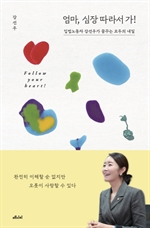
코로나-19 바이러스에 대한 이해 : 실내 와 실외 활동 연구
- 저자Jie Yu, Peiwei Chai, Shengfang Ge, Xianqun Fan 저
- 출판사아진
- 출판일2020-07-12
- 등록일2020-12-21
- SNS공유


- 파일포맷PDF
- 파일크기11MB
- 공급사YES24
-
지원기기
PC
PHONE
TABLET
프로그램 수동설치
전자책 프로그램 수동설치 안내
아이폰, 아이패드, 안드로이드폰, 태블릿,
보유 1, 대출 0,
예약 0, 누적대출 8, 누적예약 0
책소개
In late December 2019, an unprecedented outbreak of coronavirus disease 2019(COVID-19) caused by SARS coronavirus 2 (SARS-CoV-2) (previously named
2019-nCoV) in Wuhan became the most challenging health emergency. Since its
rapid spread in China andmany other countries, theWorld HealthOrganization
(WHO) declared COVID-19 a public health emergency of international concern
(PHEIC) on 30th January 2020 and a pandemic on 11th March 2020. Thousands of
people have died, and there are currently no vaccines or specific antiviral drugs
for COVID-19. Therefore, it is critical to have a comprehensive understanding of
the virus. In this review, we highlight the etiology, epidemiology, pathogenesis and
pathology, clinical characteristics, diagnosis, clinical management, prognosis,
infection control and prevention of COVID-19 based on recent studies.
등록상표
목차
제 1편 코로나바이러스 정의1. 코로나바이러스감염증-19(Covid-19) 정보 7
2. 코로나바이러스 분류 및 특성 9
3. 코로나바이러스 전자현미경 형태 11
4. 코로나바이러스 구조 (Covid-19 Organization) 13
5. 코로나19: 환경에 지속적인 영향을 미칠까? 19
6. 치료법(Therapeutical Method) 22
제 2편 연구논문
Recent Understandings Toward Coronavirus Disease 2019
(COVID-19): From Bench to Bedside
1. Introduction 23
2. ETIOLOGY 24
3. EPIDEMIOLOGY 25
4. PATHOGENESIS AND PATHOLOGY 26
5. Imaging Presentation 27
6. CLINICAL MANAGEMENT 28
7. Neonates With COVID-19 29
8. DISCUSSION 30
9. References 31

















